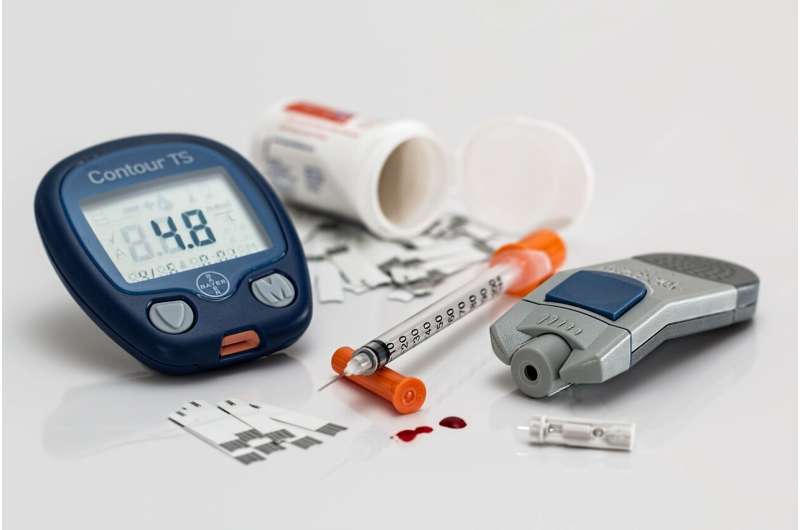New biomarkers for type 1 diabetes identified

A research team led by Dr. Despoina Manousaki of the CHU Sainte-Justine Research Centre and the Université de Montréal has identified three circulating proteins as promising molecules for the development of drugs and early detection tools for patients with type 1 diabetes. Type 1 diabetes is an autoimmune disease characterized by a deficiency of insulin secretion by the pancreas. This type affects about 10 percent of people living with diabetes, but from birth, very few biomarkers exist to predict the risk of developing the disease.
"Our analyses revealed that higher levels of SIRPG and IL27EBI3 proteins increase the risk of developing type 1 diabetes and higher levels of CTRB1 decrease the risk of developing the disease," says Dr. Manousaki, a clinician-researcher in pediatric endocrinology at CHU Sainte-Justine and a clinical assistant professor in the Department of Pediatrics at the Université de Montréal.
The results of this work are presented in Diabetes Care.
Huge potential
Circulating proteins are an underexplored source of biomarkers, but their potential is enormous.
"Because drugs bind strongly to proteins circulating in the blood, they are attractive targets for developing new therapies. Reliable test methods for measuring circulating proteins also exist, making them a possible means of early detection of those at high risk of type 1 diabetes," explains Dr. Nahid Yazdanpanah, a research associate in Dr. Manousaki's lab and first author of the study.
To characterize these biomarkers, Dr. Manousaki and her team carried out a Mendelian randomization study to identify proteins in the bloodstream that influence the risk of developing type 1 diabetes. This technique uses known genetic variations within a population to examine the causal effect of a variable on disease risk factors.
First, the research team mined a database to identify the genetic determinants of 1,600 circulating proteins. Then, they analyzed genomic data from 9,684 patients with type 1 diabetes and 15,743 controls to assess whether any of these proteins were associated with type 1 diabetes risk.
"Based on our results, we observe that an increase in plasma SIRPG is associated with an almost 60 percent increase in the risk of developing type 1 diabetes, while an increase in IL27EBI3 doubles the risk. Conversely, a higher CTRB1 level has a protective effect with a nearly 20 percent decrease in the risk of developing the disease," indicates Dr. Manousaki.
According to Dr. Manousaki, "We need further research to validate these candidate proteins in case-controlled cohorts of type 1 diabetes, but these proteins have the potential to advance precision medicine for individuals at risk of developing this condition."
More information: Nahid Yazdanpanah et al, Clinically Relevant Circulating Protein Biomarkers for Type 1 Diabetes: Evidence From a Two-Sample Mendelian Randomization Study, Diabetes Care (2021). DOI: 10.2337/dc21-1049





















